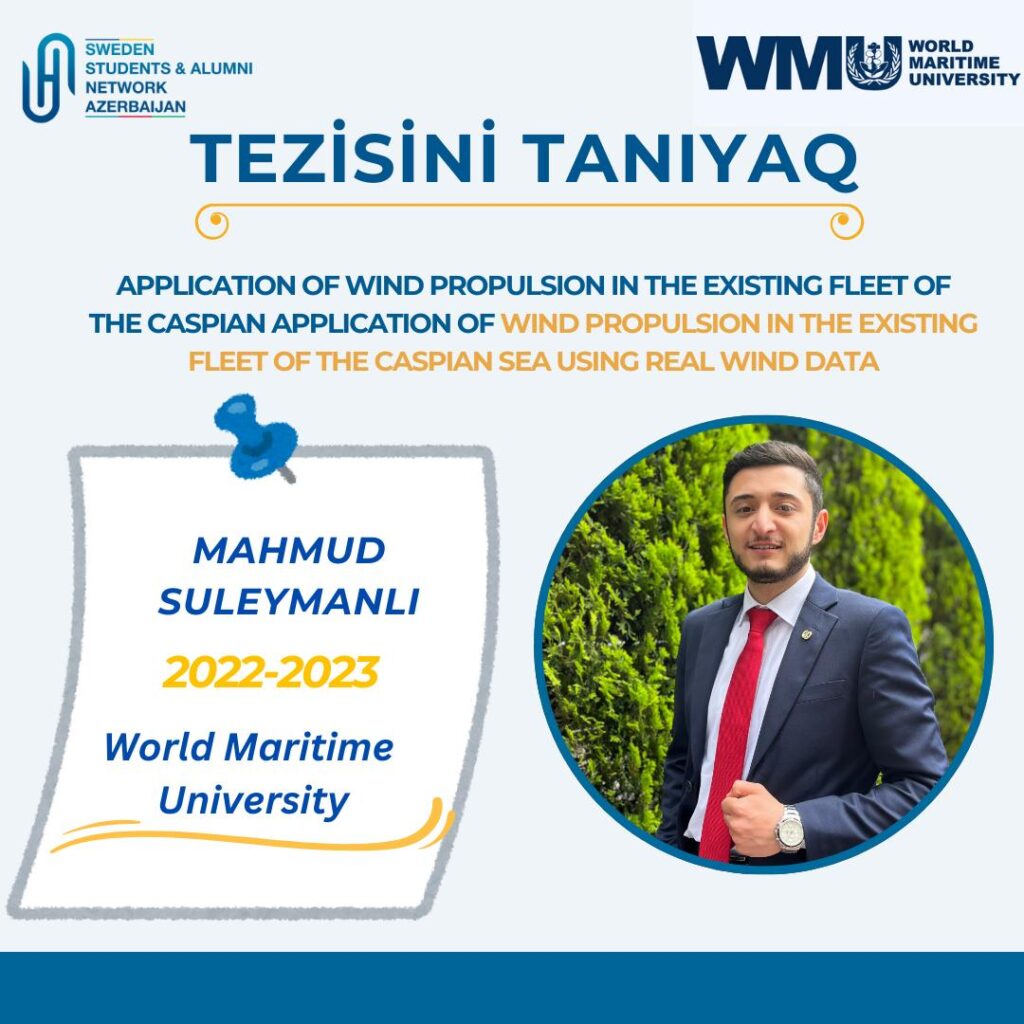Dear friends,
The 4th alumni whose thesis you will learn about is Mahmud Suleymanli, who completed his academic journey at World Maritime University in 2023, specializing in “Maritime Energy Management “.![]()
Let’s explore his research topic:
Research topic: “Application of wind propulsion in the existing fleet of the Caspian Application of wind propulsion in the existing fleet of the Caspian Sea using real wind data”
“This research assesses the propulsive power contribution of Flettner rotor and Wing sail technologies when used on an RO-PAX ferry operating in the Caspian Sea. The evaluation was conducted using a mathematical model calculating the forces produced by Wing Sail and Flettner rotor propulsion systems.
In order to address global climate change issues brought on by greenhouse gas emissions from the burning of fossil fuels, research will give solutions using renewable energy sources. In addition, will consider installing wind energy on board ships or explore the implementation of wind power energy and identify the most efficient technique for generating maximum power.
First, the model calculated the optimum rigid wing sail angles under various wind conditions. Second, the model calculated the thrust force and power contribution of the Wing sail and Flettner rotor during selected months and days. The model was applied using real wind data for a specific region (Caspian Sea) in a selected route, from Baku Port to Kurik Port. Maximum thrust results were obtained in July for the Wing Sail, whilst the Flettner rotor generated higher values compared to the Wing Sail in October. While analysing and calculating the power generation of the Flettner rotor, the maximum value for the spin ratio of the rotors was limited to 2. Based on power values, total energy calculations with and without wind-assisted propulsion were conducted.
Fuel savings for the Flettner rotor were found to be around 4-5% in October, however, average fuel savings were about 2% per year. Accordingly, 7.8 tons of CO2 can be saved per year. The cost-benefit assessments have shown that the implementation of these new technologies on the selected ferry is contingent upon many factors specific to the area and the chosen route. In addition, the sail angle optimization model may serve as a valuable tool for both design and operational purposes.”
Many thanks to Mahmud for sharing his paper with us. ![]()
Thesis link: https://commons.wmu.se/cgi/viewcontent.cgi?article=3253…
P. S. Please use this link if you would like us to share your research topic with our readers: https://forms.gle/hLQ1BNJkNQpLZExB9



